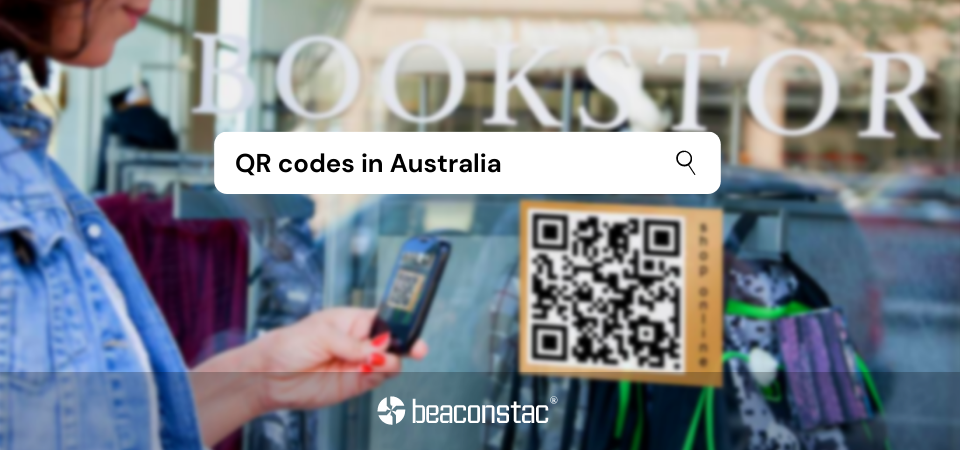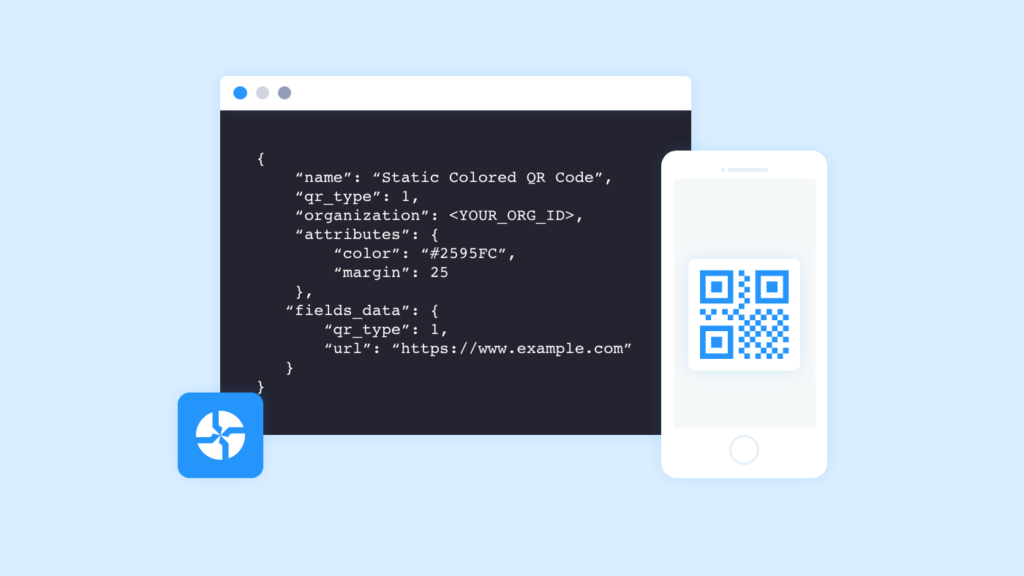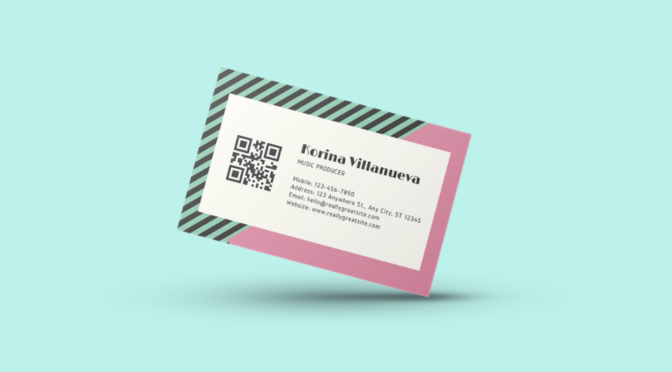💻 Key takeaways:
1. QR Codes are used in churches to attend virtual prayers, celebrate festivals online, and guide devotees to donation websites.
2. They can be used for purposes such as, providing religious information, reciting holy audio texts, and registering to worship virtually.
3. With a QR Code generator, churches and other religious institutions can create customizable QR Codes to add to banners, sign boards, or print materials.
COVID-19 has altered the age-old ritual of face-to-face congregations for many devotees and religious centers worldwide.
The most significant change in this period relates to religious centers’ scientific and technological advancements and how they are trying to stay relevant. Religious centers, including churches, temples, synagogues, and mosques, have been quick to join the world of virtual communication.
Although the seepage of virtual communication is relatively recent, religious centers have long adopted technologies in the past. The usage of technologies such as QR Codes for churches has also increased post-pandemic.
QR Codes for churches are used to join virtual prayers, celebrate festivals, redirect attendees to donation websites and so on. With these possibilities in hand, churches can leverage a QR Code maker to create QR Codes for diverse use cases.

Let’s see how QR Codes can be used for churches beyond virtual prayers in this blog post.
6 incredible use-cases of QR Codes for churches
#1 Contact tracing to curb the spread of COVID-19

Churches, temples, and other religious centers use QR Codes for contact tracing and include them at entry points for visitors and staff to disclose their health and travel history to curb the spread of the virus.
Following the guidance of the NHS COVID-19 Test and Trace Data, several churches across the UK have made it mandatory to collect data for NHS Test & Trace for worship places.
Churches can make a QR Code for a poster and share it across their building, in a way that its easily accessible for visitors, including those in wheelchairs and other disabilities, to scan the QR Code and disclose their health status to curb the spread of the virus.
First Presbyterian Church uses Uniqode’s QR Codes for contact tracing to filter their visitors based on their health status.
Make use of QR Code contact tracing forms and embed them at entry points, common areas, and websites so visitors can scan the QR Code to declare their health status, travel history, and other existing health conditions to curb the spread of the virus.
Read our detailed guide on how you can efficiently track attendance with QR Codes.
#2 Provide historical and religious facts

Tiruvannamalai, a small town in India, has introduced QR Code signboards in ten places in the district to provide information on religious and tourist sightseeing.
Tourists can scan the QR Code to be redirected to the relevant websites with information, including religious places.
“As many informed that there was no proper information available on such locations, especially places of religious interest and also because other state visitors would want to visit such sites in one go when they arrive here for the girivalam, we decided to opt for QR coded signboards,” says the district collector KS Kandasamy.
QR Codes can add tremendous value for visitors who want to learn more about a place. Place posters and banners at popular sightseeing places and religious centers with QR Codes that redirects the user to a website containing interesting facts about the site.
#3 Virtual celebration of festivals

The current COVID-19 pandemic has made it impossible for devotees to attend festivals at their respective religious centers.
While some churches, mosques, and temples are hosting virtual celebrations on Facebook Live and Zoom, remembering the right link to join the celebration in time is rather difficult.
Embed QR Codes on the particular religious centers’ websites so devotees can quickly join the virtual celebration with a quick scan. Redirect the QR Code to Zoom or Google Meet and add the event to their calendars easily.
Southwest Church uses QR Codes to redirect its devotees to their online Christmas engagement campaign to help them join virtual celebrations easily.
#4 Collect donation seamlessly

Masjid Jamek Kuala Lumpur is the first mosque to accept cashless donations via QR Codes accelerated by the eDerma campaign by Bank Muamalat.
Visitors at the mosque could make donations by scanning the QR Code through the i-Muamalat app to donate straight into the mosque’s bank account.
QR Codes can facilitate online giving by directing users to donation platforms or mobile payment systems, enabling convenient and secure financial contributions.
QR Codes can be embedded onto churches, mosques, or temples’ entry points and even on their websites so visitors can simply scan the QR Code to donate. Administrators can link the QR Code to a website, so donations made are transparent.
East Cobb Presbyterian Church uses Uniqode’s QR Codes to redirect visitors to a gift/donations page.
#5 Recite audio prayers and religious texts

Having to carry religious books like The Bible and the Quran every time one attends the church or mosque may be a hassle.
A great way of helping visitors and including QR Codes for churches and other religious centers is by linking the QR Code to sermons, the Bible, and other religious texts. Link the QR Codes directly to the verses, so it’s easier for visitors and the priest to read it out.
QR Codes can lead to digital copies of sermon notes or outlines, allowing attendees to follow along and take notes on their mobile devices.
Embed QR Codes to be linked to religious texts on church benches, walls, and common praying and gathering areas so visitors can easily scan the QR Code and open the text directly to eliminate the need to bring a physical book.
In addition, embed audio QR Code and video QR Code on the website so visitors can listen to audio recitings of religious texts.
#6 Register to pray and worship

With places of religious worship shut across the globe due to COVID-19, several places of worship are now slated for reopening with stringent restrictions in place for devotees.
To avoid long queues at religious places, governments and administrators have leveraged QR Codes for devotees to register themselves and allow them to pray in staggered time slots to avoid the spread of the virus.
QR Codes can link to online forms or platforms where individuals can submit prayer requests, fostering a sense of community and support among congregants.
Siddhivinayak Temple and Shirdi Sai Baba Temple in Maharashtra have embedded QR Codes for devotees to fill in their details and book an appointment, following which a QR Code will be generated with a dedicated time slot.
Churches can make use of QR Codes on their websites and entry points to link it to a landing page asking its visitors to fill in their details, show them available time slots, and declare their negative COVID-19 results for easy worshipping.
Create a QR Code for your church now!
Depending on the type of content the QR Code is leveraged, pick a QR Code type and add it on the website, social media, posters, banners, and entry points for devotees to scan.
To create a QR Code –
- Go to Uniqode’s QR Code generator
- Pick a QR Code type such as URL QR Code, Video QR Code, Location QR Code, or Facebook QR Code
- Fill in the details
- Customize the QR Code to add a logo, change background color, eyes, and template
- Generate and test the QR Code
- Download the QR Code
Get a QR Code for your church location
Create a location QR Code for your church to provide directions to devotees easily. Embed this QR Code on print media, bulletin boards, and brochures for potential visitors to navigate to your church seamlessly.
Here’s how it works:
- Sign up for Uniqode’s 14-day free trial
- Log in to the dashboard and create a QR Code
- Select ‘Location’ as the QR Code type
- Choose your church’s location from Google Maps
- Customize your QR Code
- Generate your location QR Code and test it before downloading
Make worshipping easy with QR Codes for churches
The changing trend of virtual communication amongst religious institutions and devotees is indeed all about adopting new technologies on ways to keep practicing their centuries-old religious beliefs.
The usage of live-streaming with the help of technology such as QR Codes and online hosts has increased the viewership for smaller churches, witnessing hundreds of thousands to watch their service online.
Religious institutions have gripped on to technologies that require minimum troubleshooting efforts such as QR Codes to help devotees continue their practices with virtual prayers, attending festivals, donations, and even events without visiting the place in person.
-
With brands expanding their presence on omnichannel platforms to reach more audiences, learn how QR Codes help brands sync their online and offline marketing strategies to close the loop seamlessly.
-
Trying to build a loyalty program for your brand? Look no further! Check out this complete guide on the best customer loyalty platforms to help pick the best one and foster long-term brand loyalty effectively.
-
Struggling to improve in-store sales and shelf performance rate for your brick and mortar retail store? QR Codes for planograms are the answer you’re looking for.
-
Looking for a design software that fits your requirements? Check out this detailed guide on product packaging design tools with helpful information on how to create an effective packaging design.
-
What led to the surge in the usage of QR Codes in Australia? Is it because of contact tracing or payments? What does the future hold? Let’s find out.
-
Want to know how to add a QR Code API to your app without complex troubleshooting? Read to find out!














